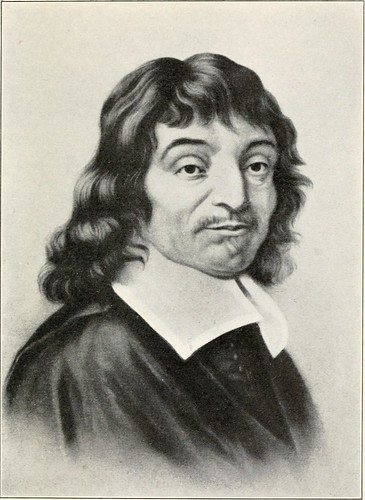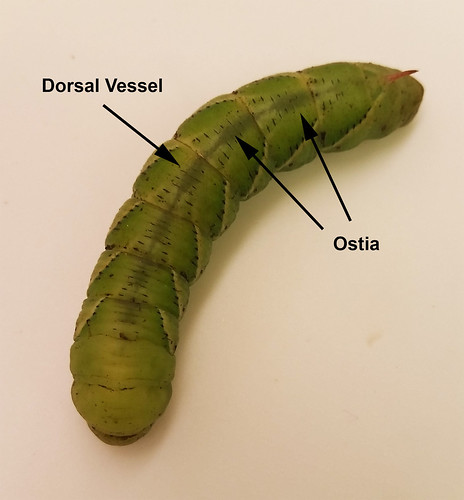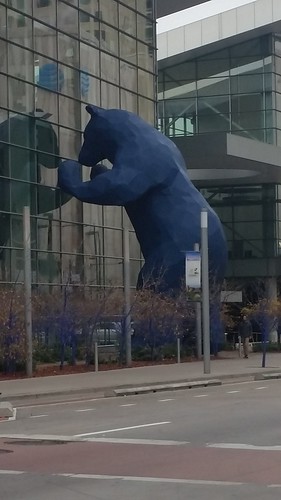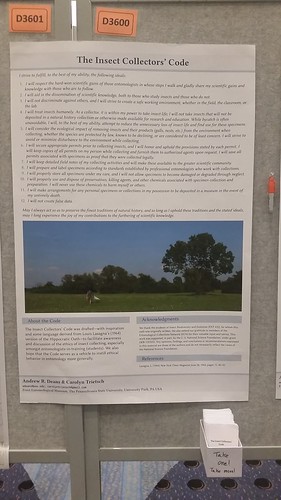How much can you tell about a wasp’s life when all you have are dead specimens that are over 30 years old and smaller than a grain of rice?
If you have a morphologist and a good microscope, you can actually tell a lot.
When we took a look at four tiny wasps collected in Costa Rica in 1985, we knew immediately that we were dealing with a new species. It was clear that the species belonged to the genus Dendrocerus based on the dark patch on its wing, called a pterostigma, and the numerous long branches of the male antennae.
However, we didn’t know of any Dendrocerus, or any wasp in the superfamily Ceraphronoidea, that had a row of mesoscutellar spines, shown with an arrow in the picture below.
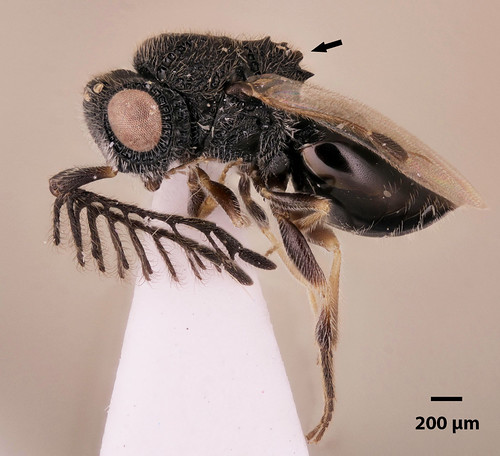
What could these mesoscutellar spines be used for?
Like many wasps, ceraphronoids are parasitoids, meaning that their larvae feed on a live host insect. Some are endoparasitoids, which lay their eggs inside a live insect so that the larvae can eat it from the inside out. After they’re done feeding, endoparasitoid larvae may stay inside their hosts body to complete their development. Once they are mature, the adult wasps will then push or chew their way out.
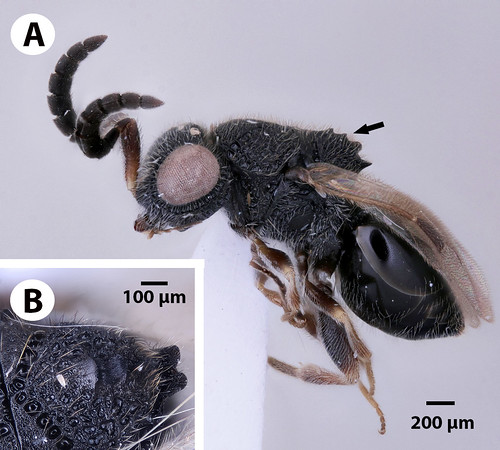
Dendrocerus scutellaris is the only known ceraphronoid with a series of mesoscutellar spines, but this is not the only feature that sets it apart: whereas other ceraphronoids have pointed mandibles, D. scutellaris has blunt, flattened mandibles. With its blunted mandibles, D. scutellaris cannot chew its way out of a host.
This may be why the wasps have these spines; while emerging from their host, the wasps may rub the spines against the host’s body to help break or saw their way out. Similar structures have been found in other insects, including Hymenoptera and Lepidoptera.
For more about these wasps, check out our new publication:
Trietsch C, Mikó I, Notton D, Deans A (2018) Unique extrication structure in a new megaspilid, Dendrocerus scutellaris Trietsch & Mikó (Hymenoptera: Megaspilidae). Biodiversity Data Journal 6: e22676. https:/
This material is based upon work supported by the U. S. National Science Foundation, under Grant Numbers DBI-1356381 and DEB-1353252. Any opinions, findings and conclusions or recommendations expressed in this material are those of the authors and do not necessarily reflect the views of the National Science Foundation.

